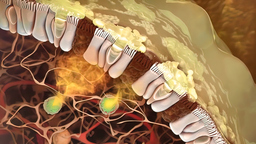Novel Small Molecules and Their Use as MALT1 Inhibitors
TECHNOLOGY NUMBER: 2021-126

OVERVIEW
Two novel compounds that inhibit the MALT1 signaling pathway- Inhibition of both the scaffolding and proteolytic functions of MALT1
- Wide-ranging applications for MALT1 driven tumors and autoimmune diseases
BACKGROUND
Mucosa associated lymphoid tissue lymphoma translocation gene 1 (MALT1) is an intracellular signaling protein that serves an important role in both innate and adaptive immunity. MALT1 is essential for activation of nuclear factor kappa beta (NF-kappaB) which is a protein complex that controls DNA transcription, T-cell activation, cytokine production, and cellular responses to stress, cytokines, free radicals, and infections. NF-kappaB functions as both a structural, scaffold protein as well as proteolytic activity that cleaves proteins and influences cellular signaling. Incorrect regulation of NF-kappaB is linked to autoimmune diseases as well as the formation of specific types of B-cell lymphoma. Previous efforts to develop therapeutic MALT1 inhibitors have yielded compounds that only block its protease activity without influencing the scaffolding activity, leading to severe autoinflammation. As such, a need exists for development of agents that affect both functions of MALT1 as a strategy for treating neoplastic and inflammatory diseases.
INNOVATION
Researchers have discovered two novel compounds that are inhibitors of those portions of the MALT1 signaling pathway which are specifically deregulated in circumstances related to the formation of cancer, inflammation, and autoimmune diseases. The inventors found two small molecule inhibitors that block the interaction between B-cell lymphoma 10 protein (BCL10) and MALT1, affecting the various components of the T- and B-cell immune responses. The resulting inhibition of the activities of MALT 1 and its downstream signaling functions cause a decrease secretion by B-cell lymphoma cells of interleukins 6 and 10. Since these compounds abrogate all MALT1 activity including protease and scaffolding activities, they may be significantly more efficacious and wide ranging in terms of therapeutic applications for MALT1 driven malignancies and overactive inflammatory diseases than other agents.